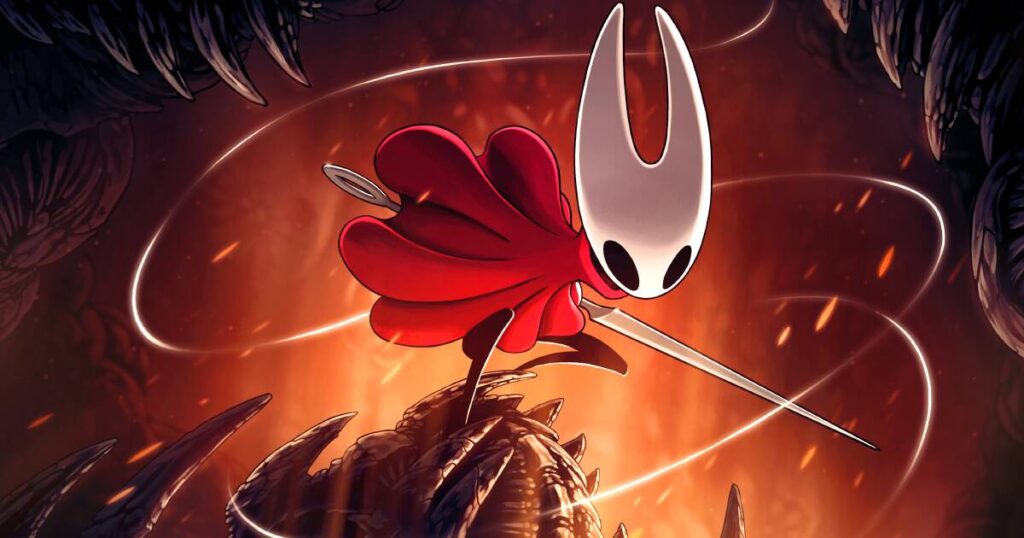
This month, the Australian-made video game Silksong has taken the gaming world by storm, becoming one of the most-played titles worldwide. Created by Team Cherry, a three-person indie studio based in Adelaide, the game is a sequel to the 2017 hit Hollow Knight. The success of Silksong not only highlights the artistry of the game but also underscores the evolving role of video games in culture and society.
On its launch day, Silksong soared to the top of Steam’s charts, with over half a million players engaging simultaneously. Critics have lauded it as one of the finest action video games of the decade, while others have noted its challenging difficulty. According to Metacritic, the game currently holds an impressive score of 92 out of 100, with a user rating of 9.1 out of 10.
A Global Moment for a Small Australian Studio
Hollow Knight and Silksong are atmospheric side-scrolling Metroidvania adventures set in intricately hand-drawn underground kingdoms. Players navigate these worlds, encountering insect-like characters, uncovering secrets, and facing formidable bosses. The games are known for their punishing difficulty, but each victory is a testament to perseverance and skill.
The release of Silksong has had a ripple effect, with Hollow Knight experiencing a resurgence in popularity, breaking records seven years after its initial release. For a small studio from Adelaide to dominate global charts with two titles simultaneously is nothing short of extraordinary.
Why These Games Matter to Players
As someone who has played games for over 40 years and now researches immersive media and game technology, I see more than just stylish combat and art in these games. Hollow Knight and Silksong are built on the psychology of play, punishing mistakes but rewarding resilience. This concept is known as “flow”—a state where challenge and skill are perfectly balanced, akin to losing oneself in a book or sport.
Flow and immersion in games can foster a sense of presence, where players feel as though they are part of the world rather than mere observers. Scholars like linguist James Paul Gee have long argued that video games can be powerful learning tools, placing players in environments where they must experiment, fail, adapt, and ultimately master challenges.
82% of Australians play video games, with the average player being 35 years old. For the first time, women comprise the majority of players.
In Australia, nine out of ten people believe games help build confidence and resilience, with action-adventure being the most popular genre—something Team Cherry has mastered.
A Small but Global Industry
These cultural breakthroughs emerge from an industry smaller than many realize. The Australian Game Development Survey 2024 reported just 2,465 people employed nationwide in game development, generating A$339 million in annual revenue. Remarkably, 93% of this revenue comes from exports.
More than half of local studios are less than five years old, while a quarter have been in operation for over a decade. Most focus on original ideas rather than contract work, which, while providing reliable income, often lacks creative control. Developing original intellectual property showcases Australia’s creativity to the world but also exposes studios to financial risk if a game doesn’t find an audience.
Globally, gaming now generates more revenue than film and music combined, yet in Australia, the sector still fights for recognition as a cultural industry equal to screen and television.
Policies like the digital games tax offset have provided some stability, but early-stage investment remains a significant hurdle.
The Risks of Global Fame
Global attention can also bring sudden challenges. Within days of its release, Silksong faced a wave of negative reviews on Steam from players in China unhappy with its translation. More than 14,000 one-star reviews temporarily pushed its score to “mixed,” despite the game’s strong critical acclaim.
Why This Matters
The story of Hollow Knight and Silksong is about more than two acclaimed video games. It illustrates how Australian indie studios can influence global play and how success can be both celebrated and contested. Games have become central to everyday life, connecting families, helping manage stress, and building communities across borders. They are also one of Australia’s most dynamic cultural exports.
Hollow Knight and Silksong demonstrate that a modest Adelaide studio can captivate millions. However, without consistent investment, publishing opportunities, and educational pipelines, the next Team Cherry may never emerge. If Australia wants to continue shaping how the world plays, video games must be recognized alongside film, TV, and music as a cultural and economic force. Games are already bigger than both industries combined and should no longer be treated as an afterthought.
When Australians play, the world takes notice.





